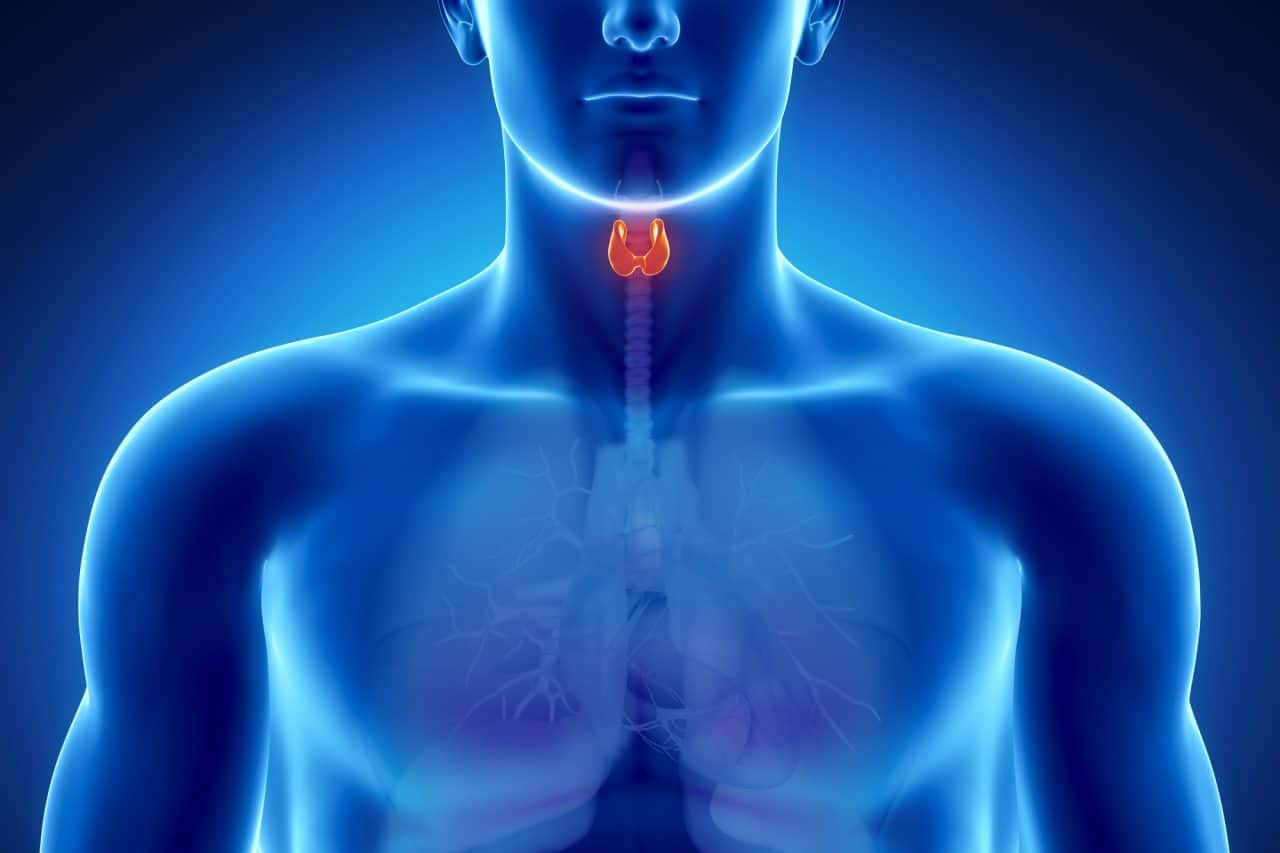
 Thyroid hormone synthesis and then its delivery to where it needs to go is a complex process that involves various stages. The process begins in the brain and ends in the cells and tissues if all goes right. That’s a big “if” when you’re someone struggling with energy, brain fog, weight problems, or insulin resistance. This begs the question whether to go ahead and begin prescription thyroid hormone replacement, what kind of replacement, and what other interventions need to begin to ensure optimal delivery, activation, and receptor binding. There are no easy answers, but for some it’s the right move to go ahead and start thyroid hormone treatment to prevent worsening of secondary problems like insulin resistance and to hopefully reverse a long list of symptoms caused by low thyroid function.
Thyroid hormone synthesis and then its delivery to where it needs to go is a complex process that involves various stages. The process begins in the brain and ends in the cells and tissues if all goes right. That’s a big “if” when you’re someone struggling with energy, brain fog, weight problems, or insulin resistance. This begs the question whether to go ahead and begin prescription thyroid hormone replacement, what kind of replacement, and what other interventions need to begin to ensure optimal delivery, activation, and receptor binding. There are no easy answers, but for some it’s the right move to go ahead and start thyroid hormone treatment to prevent worsening of secondary problems like insulin resistance and to hopefully reverse a long list of symptoms caused by low thyroid function.
The list of problems that can interfere with thyroid hormone production and function within the body is long and includes alcohol, medications, stress, insomnia, gut problems, nutrient deficiencies, and toxin exposure, among others. In an ideal world, we all live stress-free lives, abstain from alcohol, get eight hours of deep sleep, obtain all our nutrition from diverse organic locally grown fruits and vegetables and meats produced without hormones or antibiotics, we never get sick, and we have bowels that run like clockwork.
Reality check! The average American doesn’t actually live in this utopian existence. Don’t get me wrong, it’s well worth the effort to seek this type of existence and it certainly would make sustained health and vitality more likely. Some, though, are not quite there yet and there is no guarantee your thyroid will kick right back in if you do make all the best health, lifestyle, and nutrition changes. There are many things we can’t control! The question then becomes whether to take six months or a year and work on these areas of our life and nutrition and monitor thyroid function to see if it improves or to go ahead and begin thyroid replacement. The answer should always be individualized and based on symptoms, labs, and current ability to change some of the above known culprits.
Consider also that it takes four to six months to fully optimize thyroid if all goes right. It’s not as simple as throwing someone on some Synthroid and saying, “Ok, we’ll see ya in year!” The reason being a process in the body called “negative feedback inhibition.” This is common in all forms of hormone synthesis and regulation, but the feedback loop is particularly strong with thyroid hormone. It’s fairly common for someone to start thyroid medication and come back and say they noticed they felt better for a few days or a couple weeks but then went back to feeling like they did before. This is the negative feedback loop which gets in a bit of a tug of war with your natural thyroid production. It typically takes several adjustments every month or so until the loop is overcome and your thyroid hormone levels are stable and in the optimal range.
Another problem that can occur that leads to the existence or recurrence of low thyroid symptoms is called reverse T3 syndrome. Reverse T3, or rT3, is a blocking form that doesn’t allow your active T3 hormone to bind to receptor sites. This will lead to ongoing low thyroid symptoms despite often normal levels of thyroid hormone in your blood work. The elevation of the rT3 form may be due to the type of thyroid hormone replacement you are on. T4-only thyroid and even some of the natural desiccated thyroid medications like Armour or Naturethroid can convert to this blocking form, which leaves you effectively in a hypothyroid state. The strategy to combat this is to change to a T3-only thyroid medication like Cytomel or even better a compounded version that contains T3 and lower amount of T4. It takes several months to lower an elevated rT3 but symptoms should improve as you go along.
Another important thing to consider is whether your thyroid levels are simply within the reference range or in the optimal range. A reference range is a process whereby the lab takes locally submitted blood samples, assesses thyroid hormone levels, and statistically removes the top and bottom five percent. This is different than an optimal range, which is based on symptom resolution and is more research based. Ideally, you want your T3 in the upper quarter, T4 upper half, rT3 below the midline of reference range, and TSH under 2 for optimal thyroid function and symptom resolution.
I think I’ve made a decent case for early and proper diagnosis and not only treatment but optimization. The subtleties of sluggish, low, or suboptimal thyroid hormone production reveal themselves with time. Unfortunately, that manifests as a long list of not only symptoms of low energy, insidious gains on body fat, and brain fog, but also an increased risk for metabolic-related diseases like diabetes and heart disease. To treat or not to treat, that is the question. The answer collectively depends on your symptoms, labs, and propensity for lifestyle change.
